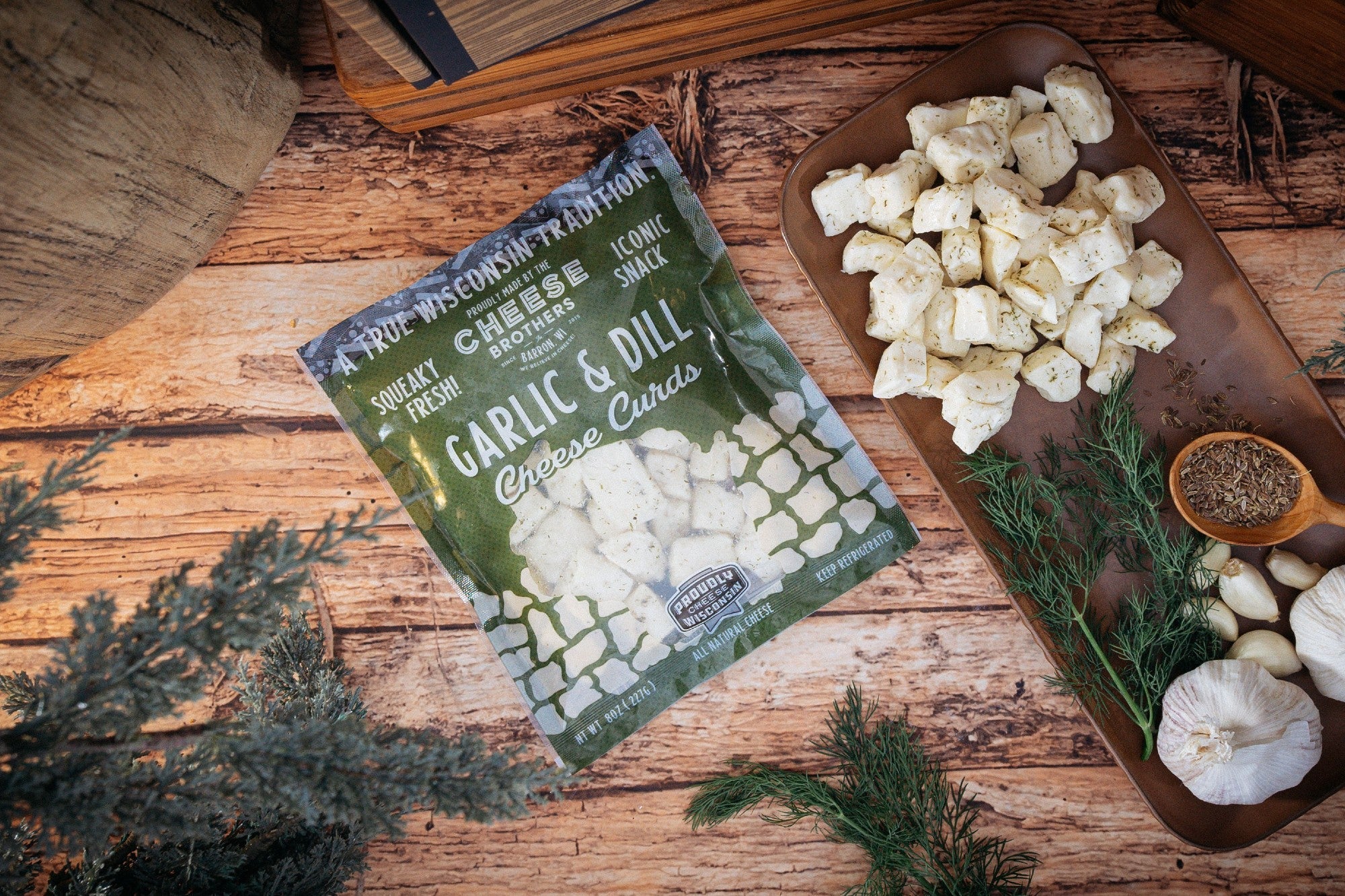All About Cheese Curds: The Squeaky Snack Sensation
Cheese curds are the ultimate comfort food for cheese lovers, celebrated for their unique squeaky texture and rich, creamy flavor. A staple in regions like Wisconsin and Quebec, these bite-sized morsels are versatile, delicious, and packed with character. Whether enjoyed fresh, deep-fried, or tossed into a dish, cheese curds are a crowd-pleaser that bring joy to any table. In this blog post, we’ll dive into what makes cheese curds special, explore their varieties, and share tips on how to enjoy them, along with their surprising benefits.
What Are Cheese Curds?
Cheese curds are fresh, young cheese pieces formed during the cheesemaking process, typically from cow’s milk. They’re the result of curdling milk with a coagulant (like rennet), separating the curds from the whey, and pressing them lightly before they’re aged into harder cheeses like cheddar. Unlike aged cheeses, curds are enjoyed fresh, within hours or days of production, which gives them their signature squeak when bitten. The squeak comes from the elastic protein structure that breaks down as the cheese ages, making freshness key.
Types of Cheese Curds
Cheese curds come in various forms and flavors, each offering a unique experience:
-
Classic Cheddar Curds:
-
Description: Made from cow’s milk, these are the most common curds, especially in Wisconsin, the cheese curd capital of the U.S.
-
Flavor Profile: Mild, creamy, and slightly tangy, with a springy, squeaky texture.
-
Best For: Snacking fresh, frying, or tossing into salads.
-
-
Flavored Curds:
-
Description: Infused with seasonings like garlic, dill, Cajun spice, or jalapeño for added flair.
-
Flavor Profile: Ranges from savory and herbaceous to spicy and bold, maintaining the classic curd texture.
-
Best For: Adventurous eaters or party appetizers.
-
-
Poutine Curds:
-
Description: A Quebec favorite, these curds are used in the iconic dish poutine, topped with gravy and fries.
-
Flavor Profile: Mild and melty when warm, with a soft, gooey texture that holds up under hot gravy.
-
Best For: Traditional poutine or creative spins like breakfast poutine with eggs.
-
-
Goat or Sheep Milk Curds:
-
Description: Less common, made from goat or sheep milk for a different flavor profile.
-
Flavor Profile: Tangier and earthier than cow’s milk curds, with a slightly softer texture.
-
Best For: Gourmet cheese boards or pairing with fruits and nuts.
-
How to Enjoy Cheese Curds
Cheese curds are incredibly versatile, making them a go-to for snacks, meals, and entertaining. Here are some popular ways to savor them:
-
Fresh Snacking: Eat curds straight from the bag for the ultimate squeaky experience. They’re best at room temperature, ideally within 12–24 hours of production for maximum freshness. Pair with crackers, grapes, or a cold beer for a simple treat.
-
Deep-Fried Cheese Curds: A Midwest classic, these are battered and fried until golden and crispy outside, gooey inside. Serve with ranch or marinara dipping sauce for a crowd-pleasing appetizer. Try a light beer batter for extra crunch.
-
Poutine: Layer curds over hot fries, then smother with rich brown gravy. Add toppings like bacon, green onions, or smoked meat for a twist. Use fresh or slightly melted curds for authentic texture.
-
Salads: Toss plain or flavored curds into green salads or grain bowls for a protein-packed, creamy addition. Dill curds pair well with cucumber and feta, while jalapeño curds spice up quinoa salads.
-
Baked Dishes: Incorporate curds into casseroles, mac and cheese, or stuffed peppers for a melty, cheesy boost. Their mild flavor complements bold ingredients like chorizo or roasted vegetables.
-
Charcuterie Boards: Add curds alongside cured meats, olives, and fruit for a fun, rustic touch. Flavored curds like garlic or Cajun add variety to the spread.
Benefits of Cheese Curds
Beyond their deliciousness, cheese curds offer several nutritional and practical perks:
-
High in Protein: Curds provide 6–8 grams of protein per ounce, supporting muscle repair and keeping you full. They’re a great post-workout or on-the-go snack.
-
Rich in Calcium: A single ounce delivers about 15–20% of your daily calcium needs, promoting strong bones and teeth.
-
Low in Carbs: With nearly zero carbs, curds are ideal for low-carb, keto, or diabetic-friendly diets.
-
Versatile and Portable: Fresh curds don’t require refrigeration for short periods, making them perfect for picnics, road trips, or hiking.
-
Customizable: Flavored varieties cater to diverse tastes, and plain curds are a blank canvas for your own seasonings or dips.
Considerations
-
Sodium Content: Curds can be high in sodium (100–200 mg per ounce), so opt for low-sodium versions if needed.
-
Freshness: The squeak fades after a few days, so consume within 3–5 days of purchase or freeze to preserve (though freezing may soften texture).
-
Calories: Curds are calorie-dense (about 110 calories per ounce), so enjoy in moderation if watching your intake.
Sourcing and Storing Cheese Curds
-
Where to Find Them: Look for curds at local dairies, farmers’ markets, or specialty cheese shops, especially in Wisconsin or Quebec. Supermarkets often carry packaged curds, and online retailers like Wisconsin Cheese Mart ship nationwide.
-
Storage: Store curds in the fridge at 35–40°F in their original packaging or a sealed container. For the best squeak, bring to room temperature before eating. Freeze for up to 6 months, but thaw slowly in the fridge to maintain texture.
-
Freshness Tip: If curds lose their squeak, microwave for 5–10 seconds to restore some springiness, though frying or baking can also revive them.
Why Cheese Curds Are Special
Cheese curds stand out for their playful texture and fresh, milky flavor that captures the essence of cheesemaking. In Wisconsin, they’re a cultural icon, sold at roadside stands and celebrated at festivals. In Quebec, they’re the heart of poutine, a dish beloved worldwide. Their squeaky bite and versatility make them a favorite for kids and adults alike, whether enjoyed as a quick snack or a gourmet treat. Fans rave about their “addictive” quality and how they “bring back childhood memories” of fairground feasts.
Tips for Enjoying Cheese Curds
-
Experiment with Flavors: Try spicy curds for a kick or garlic for savory depth to find your favorite.
-
Pair Thoughtfully: Match with light beers, crisp white wines, or tart ciders to complement their richness. For poutine, pair with a bold red wine to balance the gravy.
-
Get Creative: Use curds in recipes like cheesy nachos, stuffed burgers, or even pizza toppings for a fun twist.
-
Support Local: Buy from small dairies or farmers’ markets to enjoy the freshest curds and support artisans.
-
Party Pleaser: Serve fried curds with a variety of dips (sriracha mayo, honey mustard) to wow guests at your next gathering.
Cheese curds are more than just a snack—they’re a celebration of flavor, texture, and tradition. From their iconic squeak to their endless versatility, these little nuggets of joy bring something special to every bite. Whether you’re munching them fresh, frying them to golden perfection, or piling them onto poutine, cheese curds are sure to delight. So hunt down a bag, experiment with new ways to enjoy them, and let the squeaky sensation steal the show at your next meal!








